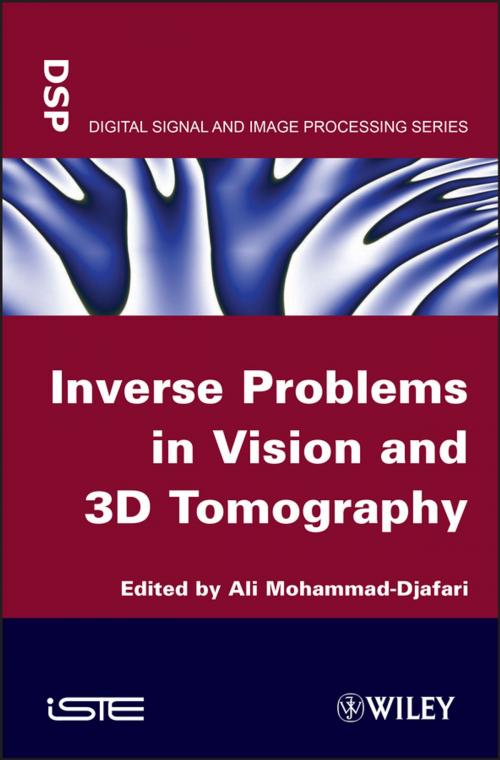| Author: | ISBN: | 9781118600467 | |
| Publisher: | Wiley | Publication: | January 29, 2013 |
| Imprint: | Wiley-ISTE | Language: | English |
| Author: | |
| ISBN: | 9781118600467 |
| Publisher: | Wiley |
| Publication: | January 29, 2013 |
| Imprint: | Wiley-ISTE |
| Language: | English |
The concept of an inverse problem is a familiar one to most scientists and engineers, particularly in the field of signal and image processing, imaging systems (medical, geophysical, industrial non-destructive testing, etc.) and computer vision. In imaging systems, the aim is not just to estimate unobserved images, but also their geometric characteristics from observed quantities that are linked to these unobserved quantities through the forward problem. This book focuses on imagery and vision problems that can be clearly written in terms of an inverse problem where an estimate for the image and its geometrical attributes (contours and regions) is sought.
The chapters of this book use a consistent methodology to examine inverse problems such as: noise removal; restoration by deconvolution; 2D or 3D reconstruction in X-ray, tomography or microwave imaging; reconstruction of the surface of a 3D object using X-ray tomography or making use of its shading; reconstruction of the surface of a 3D landscape based on several satellite photos; super-resolution; motion estimation in a sequence of images; separation of several images mixed using instruments with different sensitivities or transfer functions; and more.
The concept of an inverse problem is a familiar one to most scientists and engineers, particularly in the field of signal and image processing, imaging systems (medical, geophysical, industrial non-destructive testing, etc.) and computer vision. In imaging systems, the aim is not just to estimate unobserved images, but also their geometric characteristics from observed quantities that are linked to these unobserved quantities through the forward problem. This book focuses on imagery and vision problems that can be clearly written in terms of an inverse problem where an estimate for the image and its geometrical attributes (contours and regions) is sought.
The chapters of this book use a consistent methodology to examine inverse problems such as: noise removal; restoration by deconvolution; 2D or 3D reconstruction in X-ray, tomography or microwave imaging; reconstruction of the surface of a 3D object using X-ray tomography or making use of its shading; reconstruction of the surface of a 3D landscape based on several satellite photos; super-resolution; motion estimation in a sequence of images; separation of several images mixed using instruments with different sensitivities or transfer functions; and more.















